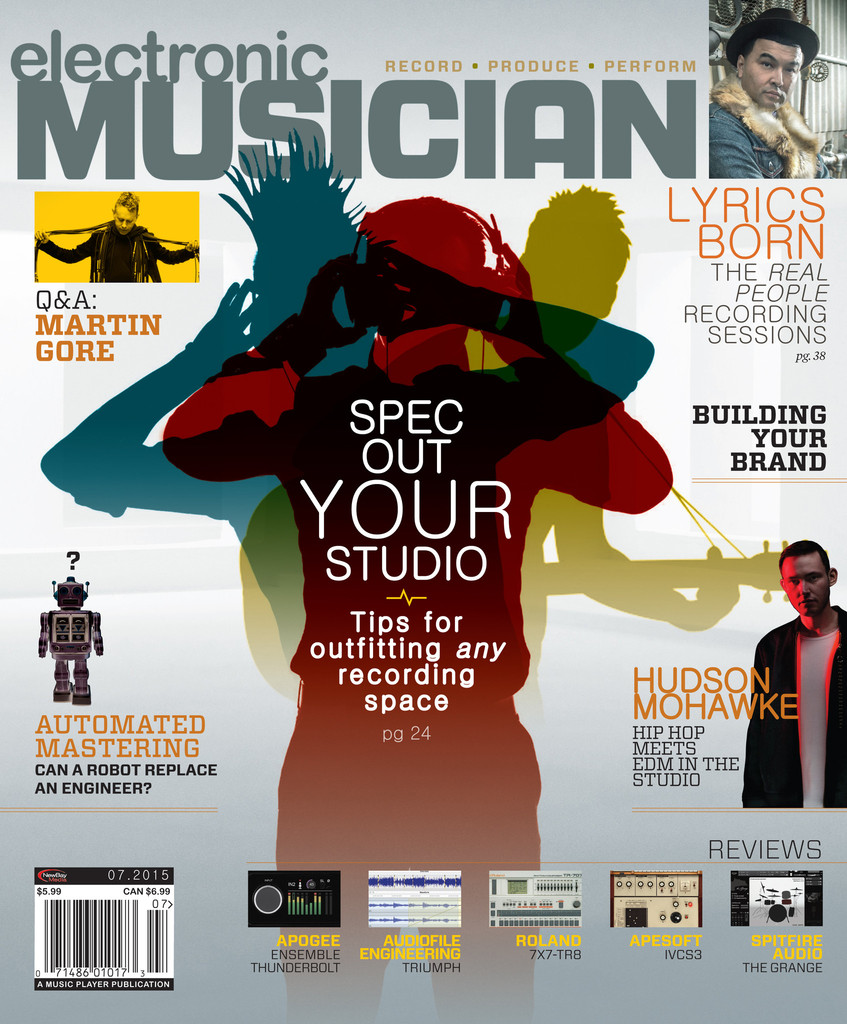Lily Moayeri
music journalist since 1992 | educator since 2004 | podcaster since 2020 | Iranian American since birth
Five Questions With Martin Gore

Depeche Mode‘s Martin Gore interviewed for his solo album, MG, for Electronic Musician Magazine‘s July 2015 Issue:
Five Questions With Martin Gore
Martin Gore is not one to take time away from making music. Immediately upon returning to his Santa Barbara, CA home after the end of Depeche Mode’s Delta Machine tour, Gore went right into his home studio to start writing MG, a cinematic instrumental album. Closer in impetus to his work with former bandmate Vince Clarke on their 2012 VCMG album, Ssss, MG focuses on strictly electronic sounds. Gore has always been far ahead of his time where music technology is concerned, and as it turns out, he’s on also on the trendsetting tip of electronic dance music.
What are five key pieces you used in making this album?
Seventy five percent of the sounds were made with my Eurorack modular system. That was the most inspiring. For the other 25 percent, I used an Elka Synthex, Gleeman Pentaphonic, Moog Voyager, a system 88 DOTCOM, an old Aries modular system, a small Digisound 80 modular system, and an Arturia MiniBrute.
What is the appeal of the Eurorack and DOTCOM, the only two new pieces used on the album?
Music technology is such a blooming industry at the moment. There are so many manufacturers making modules. It’s also a very creative environment because the modules that are coming out are often multifunctional and have different applications than your normal modular synth. The DOTCOM system, for instance, is mainly based on old Moog systems. Most of the manufacturers who work in the 5U format; they’re all based in the ’70s sound of the Moog. In the Eurorack format, on the other hand, people are pushing boundaries, moving forward, and trying to create new things.
You’ve always been on the cutting edge of technology. What are some elements of progress that stand out for you?
It’s been an amazing turnaround over the past 10 years the way the industry has gone back to analog. Everyone’s still using DAWs and computers and actual synths, but musicians who use electronic equipment are using so much analog stuff now. And things have gone back to the modular stuff, which is so popular. Even Moog is re-creating its old ’70s systems exactly to the spec sheets they were made from in the 1970s. I have a friend who had a lot of time to work on the Moog and he says there’s always that big bass with the Moog clones and the Moog stuff in general but that there was some top missing on the clones.
What carried over to this album from your VCMG project with Vince Clarke?
With the VCMG project, [Clarke] and I set out with a very definite goal in mind to make a techno album and we didn’t stray from that one iota. All of the tracks were within about three bpm of each other. It was fun to do and I love techno music. But now I feel like if I bring out another techno album, it would be so predictable and exactly what everyone would be expecting me to do. The idea of bringing out a more atmospheric instrumental album is something new and something different for me and for fans.
There are some very definite techno- sounding tracks on the album. Do you frequent techno clubs?
I can’t remember the last time I went to a techno club. The only time I do that is when I DJ, which is not very often these days, but I do it occasionally and I play techno. I’m often looking for techno online and downloading stuff. On the album, “Brink” is in the techno realm, and “Crowly” is uptempo, but the rest of it is very different. I took each track one at a time. The only thing that I kept in mind was I wanted things to be diverse. If anything started to be too similar then I would dump it and try something else. I felt that it was okay to have one track that was in the techno field on the album.
It seems like techno has been cooler for a much longer time in Europe. America just seemed to get stuck in a house rut. With Depeche Mode, every time the record company was suggesting people to remix our record it was always these top house producers. The names they were suggesting in 2010 were the same couple of names they were suggesting in the ’90s. In Europe, there’s been a whole blossoming techno scene with all kinds of movements. America is behind in all that. Maybe it’s catching up a bit now.


